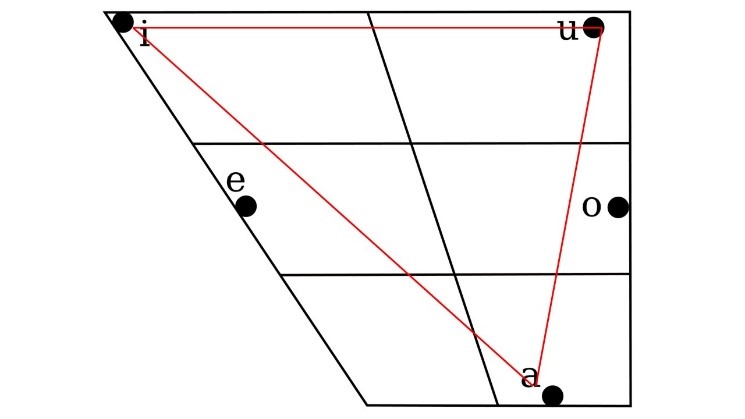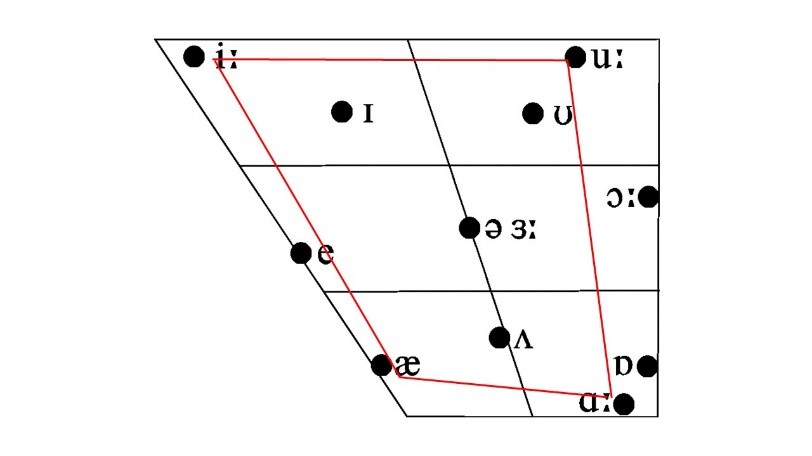Teaching Spanish Pronunciation
4. Spanish and English vowels contrasted
4.1. Spanish and English vowel spaces
Spanish has a simple and symmetrical vowel system consisting of five vowels. The most common vowel systems in all languages have five vowels and, among these, symmetrical systems, like Spanish, constitute the majority. If we arrange Spanish vowels according to their place of articulation, we get a triangle shape.

Spanish vowels
Adapted from Ladefoged and Johnson (2010: 227)
The English vowel system is more complex and has more of a quadrilateral shape, as there is a front-back contrast between low vowels as well.

British English vowels (Received Pronunciation)
Adapted from Roach (2004: 242)
It is evident at first sight that unlike Spanish, vowel length (coupled with a varying degree of difference in vowel quality) is a distinctive phonological feature in English. In Spanish, on the other hand, sequences of identical vowels are allowed e.g. lee (s/he reads) and azahar (orange flower).
It is also noteworthy that although English has more than twice as many vowels as Spanish, no English vowel exactly corresponds to any Spanish vowel. Actually, even in cases when we use the same phonetic symbol for vowels in different languages, it’s unlikely that they sound exactly the same. A further difference is that while Spanish vowels are fairly consistent across the Spanish-speaking world, there are considerable differences in the pronunciation of vowels among English varieties, even within the United Kingdom.
Ideas for exercises
Analyse the difference between the following quadruplet: pase– pasé – pasee – paseé.
Depending on the level, you can ask your students to find word pairs that differ only in the identical vowel sequence or lack of it, such as pasé – paseé.
